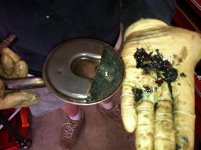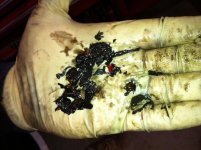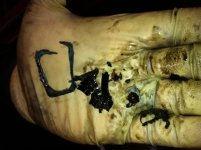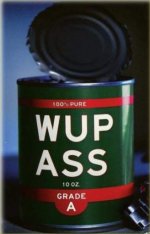If the 1984 oil pressure sending unit is anything like that on my 1989, don't expect pinpoint accuracy. I ended up testing 3 different units to find one that was somewhat accurate. NAPA aftermarket was the best and was made in the USA. ACDelco and Autozone were poor replacements.
I'm STILL having issues with my pressure sender. AFter many many test and lots of digging, I am convinced there is a flaw in the harness. Someplace there is poor contact in a harness splice that allows the delicate resistance to vary, or not be measured at all. The new sender does exactly what the old one did. wiggling wires makes changes but the poor access to that section of harness makes it very difficult to explore furter. As long as it shows a varying pressure, thats all I can count on for now. These are NOT very accurate. More for display than anything.
At 8 PSi with 40wt running warm at idle, is not horrible,. but it is a sign that its soon going to be time for a crank rebuild. Thats really not as big of a deal as it sounds. Bearings are cheap and cranks get turned everyday, if necessary. Worst part is having to d/c all the rods to drop the crank. Its an "inframe" job thats not all that difficult.
When hot and under pressure the oil seeks the easiest way out, the path of least resistance. The first opportunity is thru the main bearings. Next is the filter housing itself. The bypass is a simple little metal spring that actually stays open much of the time allowing a percentage of the oil to go around filtration. That could have trash in it, could just be weak and staying open more than it should. Either the filter housing or bearings, the loss of pressure happens down there which reduces not only the pressure to the top end but also the volume. It's does'nt take a great deal of oil to lube the top end but it needs to be steady to lube and to carry heat away from the working parts.
Until an engine gets so loose that it makes noise, increasing the vol of oil is the same as decreasing the loss in the bearings. If the flow is more than can be leaked, then you get the required oil to the top end. People have been installing hi-vol pumps in worn motors for many yrs in an effort to delay the inevitable and it does work to some degree. But, as normal wear continues it will reach the point of being too loose, and things will begin to make noise as the oil can no longer fill the gap between the surfaces. Thicker oil works well at normal temps, but for cold starts its a double edged sword. Its very bad for start up and difficult to circulate when cold. Thats where an additive like Dura-Lube or ProLong will possibly help. I have always used ProLong and have seen the results. It does help with dry starts or cold start.
Might want to try that and even look at Valvoline racing oils in the 40 or 50 wt IF it gets worse. 20-50 might work with 50wt to top it off when it runs low.
I sure hope the legal process will lead to a rebuild. These car warranty companies love to tell you there should'nt be a worn out engine IF you do the maintinence, so the same logic should apply here. The age of the car is what your lawyer has to argue against. In the meantime, just keep the oil thick and the stress down and hope for the best.













